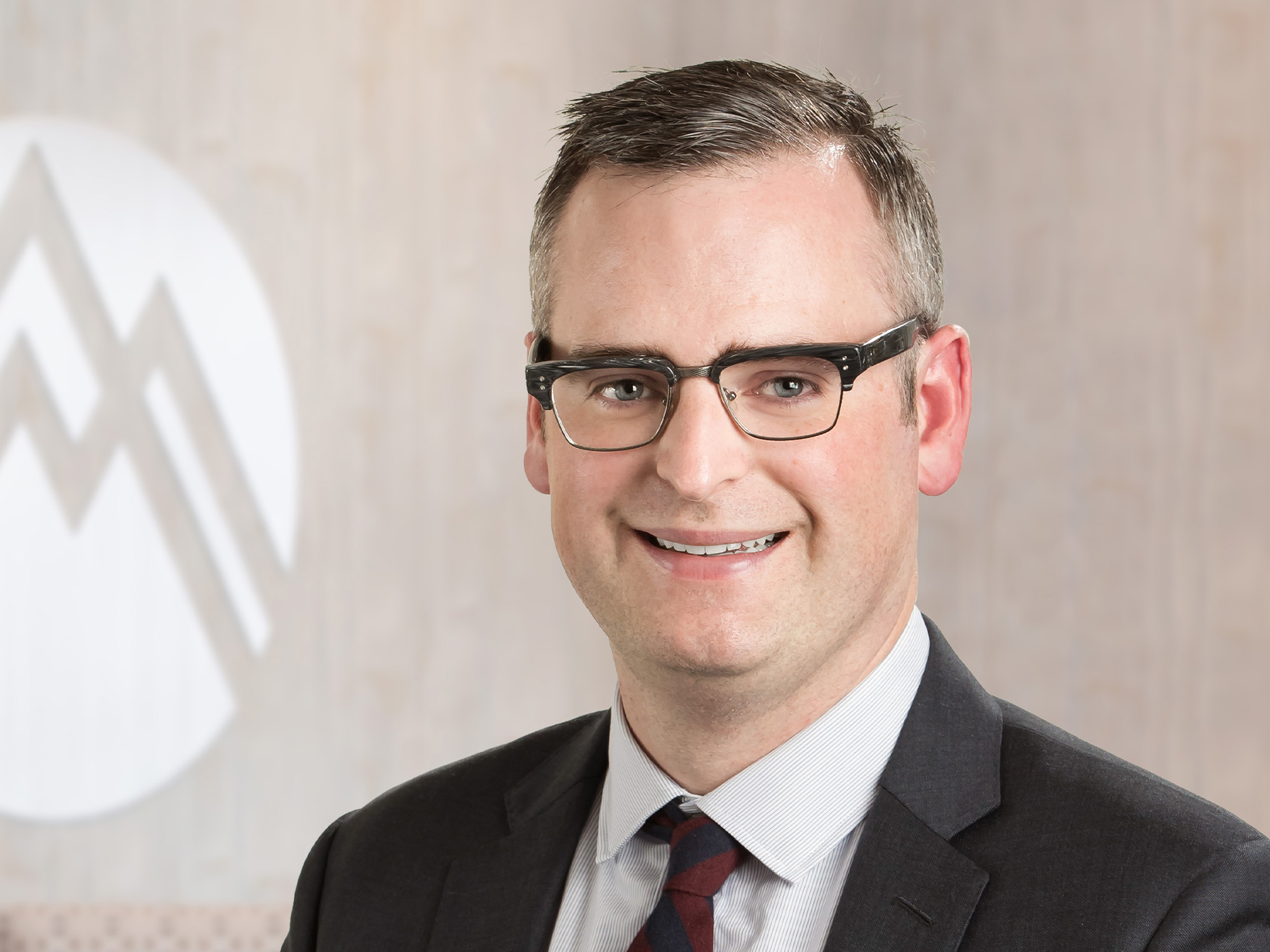Are you aware of all of your treatment options for an Achilles tendon repair?
The Achilles tendon was named after the mythical Greek warrior Achilles. A tendon wound was fatal to the legendary hero, but he didn’t have the advantages of modern medical treatment. Today, patients are more interested in learning about their treatment options for an injured Achilles tendon. Historically, almost all tendon ruptures were treated with surgery. However, treatment for these ruptures is evolving. Foot and ankle surgeon Dr. Michael Anderson explains how research has expanded medical options for Achilles tendon repair.
The history of Achilles tendon repair
“There has been a major paradigm shift in the treatment of Achilles tendon ruptures over the last five to ten years,” says Dr. Anderson. “In the past, everyone did surgery to repair an injured tendon. However, the research data now indicates that there is very little outcome difference between operative and nonoperative treatment for Achilles injuries. It turns out that a lot of patients do just fine without surgical treatment. In fact, during my foot and ankle fellowship, we treated about three-quarters of Achilles tendon ruptures without surgery. Nonsurgical treatment and physical therapy to rehabilitate the tendon is a viable option for many patients. This nonsurgical approach is a significant change for doctors, surgeons, and patients alike.”
Diagnosing an Achilles tendon rupture
“Most Achilles ruptures that we see are full thickness ruptures,” points out Dr. Anderson. “A full rupture means that the tendon is completely torn. I don’t usually need to get an MRI or an ultrasound to figure out if someone’s got a torn Achilles tendon. The injury stories follow a pattern. The patient was doing an activity and felt a pop in their heel. One patient told me that it felt like he got shot in his ankle. During the exam, I can usually feel the gap where the Achilles tore. Then, there are exam maneuvers I can perform to confirm that the Achilles tendon is not functional.”
Details of a nonsurgical Achilles tendon repair
Nonoperative treatment employs a series of splints,” explains Dr. Anderson. “Basically, the splint holds the ankle in position to align the torn tendon and ensure that the tendon ends don’t retract from one another. We maintain the splinted foot position for three weeks. During that time, patients are not allowed to walk. After that, the patient can progressively bear weight under the guidance of a physical therapist. As they progress, they wear a boot with a big heel to keep the tension off the tendon. Gradually, we decrease the boot’s heel lift and increase the amount of allowed weight-bearing. For both surgical and nonsurgical patients, rehabilitation requires two to three months in splints and a boot before they can go back to wearing a regular shoe.”
Comparing surgical and nonsurgical treatment for Achilles tendon repair
Dr. Anderson notes that there are factors to be weighed when deciding between surgical and nonsurgical tendon repair. “It’s important to be selective about who gets surgery and who doesn’t,” he explains. “People who have a surgical Achilles tendon repair have a slightly lower chance of re-rupturing the tendon. Also, a surgically repaired tendon may have a bit more strength. However, these advantages are not functionally critical for a large percentage of people.”
And risks accompany the benefits of a surgical repair. “Surgical repairs come at a higher cost to the patient,” says Dr. Anderson. “Additionally, surgery exposes patients to risk of infection as well as potential wound healing problems. When considering treatment options, my patients and I discuss the advantages and disadvantages of each option. Not all foot and ankle providers give patients a nonoperative option. However, given the similarities in outcomes and the risks of surgery, I think it’s important for patients to understand all of their options.”
Patients benefiting from a surgical repair
Research tells us that younger, more active patients benefit from the increased strength surgery offers. “If you’re trying to get back to jumping sports, distance running, or powerlifting, surgery might be the better treatment option because a surgical Achilles tendon repair will get you back to sport and activity a faster and with more strength,” says Dr. Anderson. “Consequently, younger more active patients looking to maximize their physical function and outcome are the patients for whom I recommend surgery. They are also the patients with the lowest risk of developing surgical complications such as wound healing issues.”
Patients benefiting from a nonsurgical repair
“Conversely, nonoperative Achilles tendon repair provides the most benefit for patients who are less active and more sedentary or who have higher surgical risks,” explains Dr. Anderson. “If your lifestyle is more sedentary, if you are older, or if you are a smoker or have significant medical issues such as diabetes or vascular disease, you have a higher risk of postoperative complication. In these cases, nonsurgical treatment may be preferable.
“As a provider, I’m often asked what I would do if it was me,” says Dr. Anderson. “Sometimes this is an easy question to answer and other times it’s more difficult. When it comes to an Achilles tendon repair, I don’t exactly know what I would do. I’m still young and fairly active; I enjoy a variety of outdoor activity such as biking, camping, and playing with my kids. But I can tell my patients that I have a lot of confidence in both operative and nonoperative treatment of Achilles injuries, and I believe that both would be viable for me.”
Don’t delay treatment after an Achilles tendon injury
“You can try to prevent this injury by stretching before and after activity,” advises Dr. Anderson. “However, we think there is a component of tendinopathy that may predispose some tendons to injury. If you do feel that popping noise that signals a rupture, come in to see me. Don’t try to let a tendon rupture heal by itself.” He explains that a torn Achilles tendon requires treatment under the supervision of a surgeon and physical therapist. Without treatment, this injury can lead to severe functional limitations or impairments.
“By and large, most people are able to make a pretty complete recovery after an Achilles injury,” concludes Dr. Anderson. “You may not be able to jump as high or to run as fast. And you may notice that you have a little less strength in the injured leg. But in one or two years, with proper care, most people get back to their pre-injury functional state.”
Summit Orthopedics offers personalized foot and ankle expertise
Our fellowship-trained foot and ankle physicians understand that your mobility depends on the health of your feet and ankles. If you have suffered an injury or are experiencing symptoms that make walking painful, our team of foot and ankle specialists can help with conservative treatment; proven, evidence-based surgical options; and expert rehabilitation support. Summit Orthopedics specialists have the expertise to evaluate your discomfort and develop a plan to quickly and safely get you back on your feet and on your way.
Start your journey to optimal foot health. Find your foot and ankle expert, request an appointment online, or call us at (651) 968-5201 to schedule a consultation.
Summit has convenient locations across the Minneapolis-St. Paul metro area, serving Minnesota and western Wisconsin. We have state-of-the-art centers for comprehensive orthopedic care in Eagan, MN, Plymouth, MN, Vadnais Heights, MN, and Woodbury, MN, as well as additional community clinics throughout the metro and southern Minnesota.
More resources for you
- Meet Foot and Ankle Surgeon Dr. Michael Anderson
- Can Physical Therapy Treat Foot Pain?
- Learn more about Achilles tendon injuries
- How Long Does a Cortisone Shot Last?
- Ask Dr. Anderson: What Is a Buckle Fracture?

